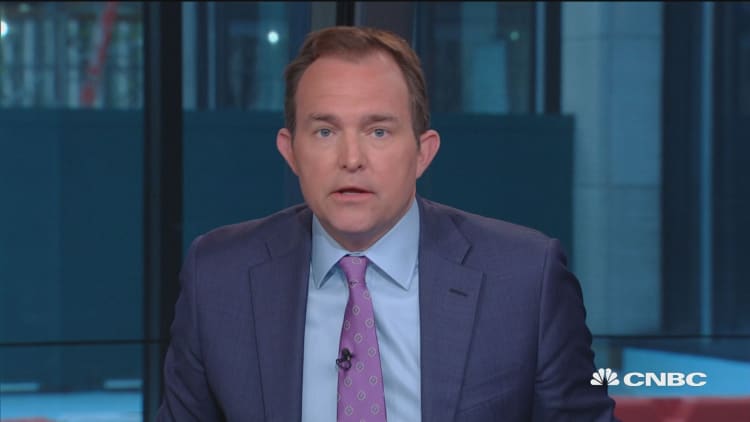


U.S. oil prices fell on Monday after data suggested inventory has spiked at a key storage base and as leading banks said a two-month long rebound has defied fundamentals.
Market intelligence firm Genscape reported that stockpiles at the Cushing, Oklahoma delivery point for U.S. crude futures rose 1,549,705 barrels in the week to April 22, traders said.
The front-month contract in U.S. crude's West Texas Intermediate (WTI) futures settled $1.09 lower, or 2.49 percent, at $42.64 a barrel. It fell from a session high of $44.04. On Friday, it hit a five-month high of $44.49.
Brent crude's front-month slid 59 cents, or 1.3 percent, to $44.53 per barrel. It hit a mid-November high of $46.18 in the previous session.
Trading was choppy, with crude prices initially building on gains over the past three weeks before sliding on the Genscape report, crude brokers said.
The dollar's slide after a three-day gain, however, provided some support to oil as commodities denominated in the greenback became attractive again to users of the euro and other currencies.
The dollar index was trading nearly 0.4 percent lower on Monday.
Oil traded at highs above $100 a barrel in mid-2014 before falling to 12-year lows below $30 earlier this year on glut worries. But since the end of February, they have risen about 30 percent as U.S. production tightened and OPEC suggested an output freeze, which has, however, not materialized.
But some analysts caution that production of oil products, especially in Asia, remains rampant and several major gasoline importing countries have started to export.
Analysts at Morgan Stanley said oil was rallying on buying by macro funds, index/exchange-traded funds flows and investors fearful of missing out even as fundamentals remained bearish and could deteriorate if prices moved higher.
"Non-fundamental rallies can last for several months and near-term catalysts may be lacking, but a macro unwind could cause severe selling given positioning and the nature of the players in this rally," Morgan Stanley analysts said.
Barclays analysts said they were "not yet convinced that prices will remain here or go even higher."
"Still-elevated inventory levels, the return of some disrupted supply, further boosts to Saudi and Iranian supply, and increased non-OECD product exports all have the potential to move prices lower over the next several months, especially if broader macro sentiment shifts," they wrote.
Market data shows the amount of open positions betting on rising WTI prices rose to June 2015 highs last week, while bets taken out in expectation of falling prices fell close to 2016 lows.





